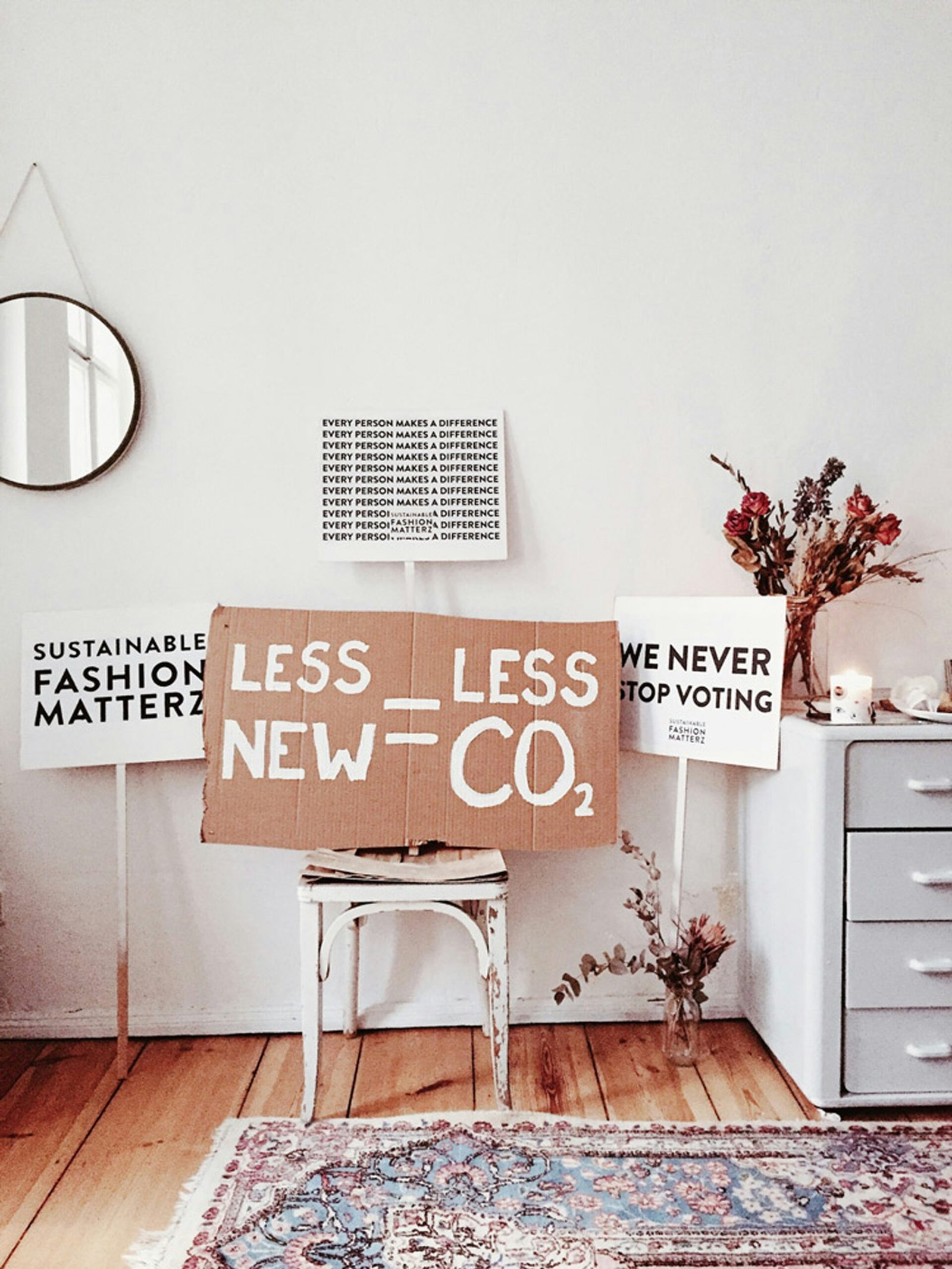
Sustainable Fashion: A Holistic Approach
Sustainable fashion is a concept that has gained significant traction in recent years, as consumers and industry professionals alike have become more aware of the environmental and social impact of the fashion industry. This movement towards sustainability encompasses a holistic approach that addresses various aspects of the fashion supply chain, from design and production to consumption and disposal. In this article, we will explore the journey of sustainable fashion from concept to practice, highlighting key principles and initiatives that are shaping the future of the industry.
Design and Materials
At the heart of sustainable fashion lies the design and choice of materials. Designers play a crucial role in integrating sustainability into their creative process by considering the environmental and social implications of their designs. This involves utilizing eco-friendly materials, minimizing waste, and prioritizing longevity and versatility in garments. Additionally, the use of innovative and sustainable materials such as organic cotton, hemp, recycled polyester, and Tencel is becoming increasingly prevalent in the industry.
Furthermore, the concept of “circular design” is gaining prominence, which focuses on creating garments that can be easily disassembled, repaired, and recycled at the end of their lifecycle. This approach aims to minimize the environmental impact of clothing by promoting a closed-loop system where materials are continuously reused and regenerated.
Supply Chain and Production
Another critical aspect of sustainable fashion is the optimization of the supply chain and production processes. This involves ensuring fair labor practices, reducing energy and water consumption, and minimizing the use of harmful chemicals and dyes. Many fashion brands are increasingly embracing ethical manufacturing practices, such as supporting fair wages, safe working conditions, and the empowerment of workers.
Moreover, the adoption of sustainable production techniques, such as waterless dyeing, zero-waste pattern cutting, and renewable energy sources, is contributing to the reduction of the industry’s carbon footprint. Additionally, the implementation of efficient logistics and distribution strategies further enhances the overall sustainability of the supply chain.
Consumer Behavior and Education
While significant strides have been made in transforming the design and production aspects of the fashion industry, the role of consumers in driving sustainable fashion practices cannot be overlooked. Educating consumers about the impact of their purchasing decisions and promoting a shift towards mindful consumption are essential components of the sustainable fashion movement.
Brands and organizations are increasingly engaging in transparent communication regarding their sustainability efforts, enabling consumers to make informed choices. The rise of sustainable fashion initiatives, such as clothing rental services, second-hand marketplaces, and clothing swap events, is encouraging a shift towards a circular and less wasteful fashion economy.
Furthermore, the concept of “slow fashion” is gaining momentum, advocating for a more conscious and deliberate approach to clothing consumption. This involves investing in timeless and durable pieces, as well as embracing the repair, rewear, and recycle ethos.
Waste Management and Recycling
The management of textile waste and the promotion of recycling initiatives are integral to achieving a circular and sustainable fashion industry. With the rise of fast fashion, the volume of clothing ending up in landfills has reached alarming levels. To address this issue, various initiatives are being undertaken to promote textile recycling and the utilization of post-consumer waste.
Several brands and organizations are exploring innovative recycling technologies to transform old garments into new textiles, thereby reducing the reliance on virgin materials. Additionally, the concept of upcycling, which involves repurposing discarded materials into new products, is gaining attention as a creative and sustainable solution to textile waste.
Conclusion
The transition towards sustainable fashion represents a paradigm shift in the way the industry operates, encompassing not only environmental considerations but also social and ethical dimensions. By embracing a holistic approach that encompasses design, production, consumption, and waste management, the fashion industry is gradually moving towards a more sustainable and responsible future. As consumers, industry professionals, and policymakers continue to collaborate and innovate, the vision of a truly sustainable fashion industry is steadily becoming a reality.
Sustainable Fashion and the Global Landscape
The pursuit of sustainable fashion has evolved beyond individual efforts and is now being addressed on a global scale. International organizations, governments, and industry leaders are collaborating to establish frameworks, policies, and initiatives that drive the transition towards a more sustainable fashion industry.
At the global level, initiatives such as the United Nations Sustainable Development Goals (SDGs) have highlighted the importance of addressing the environmental and social impacts of the fashion industry. Governments are also taking action, implementing policies and regulations to encourage sustainable practices, from banning certain hazardous chemicals to promoting the use of recycled materials.
Moreover, industry-led initiatives, such as the Sustainable Apparel Coalition and the Ellen MacArthur Foundation’s Circular Economy, are bringing together brands, suppliers, and stakeholders to develop common standards, share best practices, and drive collective change. These collaborative efforts are crucial in creating a more cohesive and impactful sustainable fashion landscape.
The Role of Technology in Sustainable Fashion
Technology has emerged as a powerful enabler in the pursuit of sustainable fashion. Innovative technological solutions are revolutionizing various aspects of the industry, from design and production to consumer engagement and waste management.
In the design phase, digital technologies, such as 3D printing and virtual prototyping, are enabling designers to create more sustainable and efficient garments. These tools reduce material waste, allow for on-demand production, and facilitate the exploration of innovative design approaches.
The integration of automation and artificial intelligence (AI) in the production process is also driving sustainability. Automated systems can optimize resource consumption, minimize waste, and ensure consistent quality, while AI-powered analytics can help brands make data-driven decisions to enhance their environmental and social impact.
Furthermore, the rise of e-commerce and digital platforms has opened up new avenues for sustainable fashion. Online marketplaces and social media are empowering consumers to access a wider range of sustainable clothing options, while also facilitating the growth of second-hand and rental fashion models.
Additionally, the use of blockchain technology in the fashion industry is enabling greater transparency and traceability throughout the supply chain. By providing a secure and transparent record of the origin, production, and distribution of garments, blockchain can help consumers make more informed choices and hold brands accountable for their sustainability claims.
The Business Case for Sustainable Fashion
Traditionally, the pursuit of sustainability in the fashion industry was often perceived as a trade-off between environmental and social consciousness and profitability. However, this perception is rapidly changing as more businesses recognize the strategic and financial benefits of embracing sustainable practices.
Consumers, particularly younger generations, are increasingly prioritizing sustainability in their purchasing decisions. Brands that can effectively communicate their sustainability credentials and align their offerings with the values of environmentally and socially conscious consumers are better positioned to capture market share and build brand loyalty.
Furthermore, sustainable practices can lead to cost savings and operational efficiencies. Initiatives such as reducing energy and water consumption, minimizing waste, and optimizing supply chain logistics can result in significant cost reductions, ultimately enhancing the bottom line.
Investors and financial institutions are also recognizing the importance of sustainability in the fashion industry. The rise of ethical and sustainable investment funds, as well as the increased scrutiny on environmental, social, and governance (ESG) factors, has made sustainability a key consideration for businesses seeking funding and investment.
Additionally, the potential for sustainable fashion to drive innovation, product differentiation, and new revenue streams cannot be overlooked. Brands that can successfully capitalize on emerging sustainable fashion trends, from upcycling and rental models to circular design, are positioned to gain a competitive advantage in the market.
Challenges and Opportunities in Sustainable Fashion
While the sustainable fashion movement has made significant strides, it is not without its challenges. Overcoming these challenges and seizing the opportunities that arise is crucial for the continued progress and scalability of sustainable fashion practices.
One of the primary challenges is the complexity of the fashion supply chain. The global and fragmented nature of the industry makes it difficult to achieve holistic sustainability, as various stakeholders have different priorities and levels of commitment. Bridging these gaps and fostering collaboration across the supply chain is essential for driving systemic change.
Another challenge is the perceived trade-off between affordability and sustainability. Sustainable fashion is often associated with higher prices, which can be a barrier for many consumers, particularly those from lower-income backgrounds. Addressing this challenge requires innovative business models, economies of scale, and increased accessibility to sustainable options.
Additionally, the lack of standardized sustainability metrics and certifications can create confusion and mistrust among consumers. Establishing clear and transparent guidelines for measuring and communicating sustainability performance is crucial to ensure the credibility and authenticity of sustainable fashion claims.
Despite these challenges, the sustainable fashion movement also presents numerous opportunities. The growing consumer demand for sustainable products, the emergence of new sustainable technologies, and the increasing attention from policymakers and investors all point to a promising future for the industry.
Opportunities lie in the development of new business models that prioritize circularity, the exploration of innovative materials and production methods, and the creation of collaborative platforms that foster knowledge-sharing and best practices. By embracing these opportunities, the fashion industry can accelerate its transition towards a more sustainable and resilient future.
The Path Forward: Driving Sustainable Fashion Transformation
Achieving a truly sustainable fashion industry will require a collective and multifaceted approach involving various stakeholders. Governments, businesses, consumers, and civil society organizations must work together to drive the necessary transformation.
Governments can play a pivotal role by establishing policies and regulations that incentivize sustainable practices, such as tax incentives for the use of recycled materials, bans on certain hazardous substances, and mandatory disclosure of environmental and social impact data.
Businesses, on the other hand, must take a proactive and holistic approach to sustainability. This includes integrating sustainability into their core business strategies, collaborating with suppliers and partners to address supply chain challenges, and investing in research and development to drive innovative sustainable solutions.
Consumers also have a crucial part to play. By making more conscious and informed purchasing decisions, supporting sustainable brands, and embracing a shift towards circular fashion models, consumers can drive the demand for sustainable fashion and hold businesses accountable for their sustainability claims.
Civil society organizations, such as non-governmental organizations (NGOs) and industry associations, can act as catalysts for change. These entities can facilitate knowledge-sharing, provide guidance and resources, and advocate for policies and practices that advance sustainable fashion objectives.
Furthermore, education and awareness-building efforts are essential for empowering all stakeholders to understand the importance of sustainable fashion and their role in achieving it. By fostering a greater understanding of the environmental and social impact of the fashion industry, we can inspire and enable individuals, businesses, and policymakers to take meaningful action.
The path towards a sustainable fashion future is not without its challenges, but the opportunities for positive change are immense. By embracing a collaborative and multifaceted approach, we can collectively transform the fashion industry, creating a more environmentally and socially responsible system that benefits both people and the planet.


